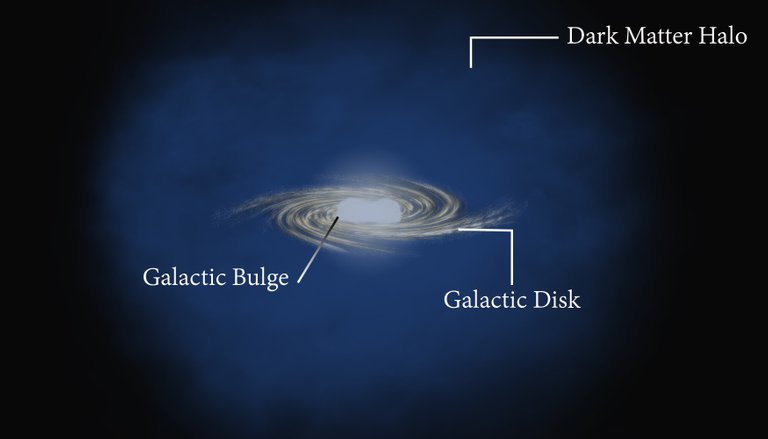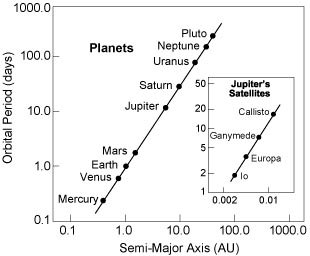Introduction
I would like to begin talking about dark matter! The most general description for dark matter is that it does not interact with the electromagnetic force. An immediate consequence of this characteristic is our failure to detect dark matter using traditional methods. But if we can't detect dark matter, how are we supposed to believe in its existence?
Similar to black holes, once we know what we are looking for it is not terribly difficult to detect dark matter because of its profound influence on the universe. Today we be identifying the necessity of dark matter to properly describe the orbital speed of matter within a galaxy.
As we will see, the phenomenon which occurs around the edges of galaxies calls for a dark matter halo like the one depicted below!

Kepler’s Laws
Without any concept of dark matter, Kepler developed his three laws providing an excellent framework to better understand orbital motion. After studying Michael Maestlin (Kepler’s mentor’s) observations, Kepler concluded that the planets could not follow perfectly circular orbits because of the regular change in their orbital speeds. As an improvement, he generalized our understanding of planetary motion to describe elliptical orbits. On top of this, he discovered that the semi-major axis cubed is proportional to the square of the orbital period!
Today, we still use Kepler's laws to verify the orbital period of stellar objects in our solar system! [1]

The Case for Dark Matter
Unfortunately, we now understand that Kepler’s laws overgeneralize what is truling happening. Looking back on them, it easy to point out his predictions for a planet's orbital speed were only dependent on the semi-major axis connecting it to its star. Thanks to modern technology we can now factor in the gravitational attraction throughout the galaxy applying a force on our object of interest.
The gif below, highlights the stark difference dark matter has on a galaxy. The left side model is of a galaxy without dark matter while the right is more reminiscent of what we find in our universe.

Additionally, here is a graph depicting the orbital velocity vs. the distance from the center of four real life galaxies. [2] As you can see their rotation curves flatten very quickly.

This has led to believe in a dark matter halo surrounding galaxies! This way as we look farther away from the center of a galaxy the net force on the object increases maintaining a near constant velocity! In fact, recent predictions suggest the milky way consist of 3 x 10^12 solar masses which would amount to 95% of its total mass! [3]
If you have any questions or know anything you would like to add feel free to do so in the comments! Or if you have any suggestions on how I can improve I would love to hear them!
If you enjoyed my content, please consider upvoting to help others find my content or even follow me if you would like to hear more!
Finally, I am always available at thequantumknight658@gmail.com and on twitter https://twitter.com/QtumKnight?lang=en!
Work Cited:
[1] https://ase.tufts.edu/cosmos/view_picture.asp?id=286
[2] http://ircamera.as.arizona.edu/NatSci102/NatSci102/lectures/darkmatter.htm
[3] https://en.wikipedia.org/wiki/Dark_matter_halo

@thequantumknight you were flagged by a worthless gang of trolls, so, I gave you an upvote to counteract it! Enjoy!!
Congratulations @thequantumknight! You have completed the following achievement on Steemit and have been rewarded with new badge(s) :
Click on the badge to view your Board of Honor.
If you no longer want to receive notifications, reply to this comment with the word
STOPDo not miss the last post from @steemitboard:
SteemitBoard and the Veterans on Steemit - The First Community Badge.
Congratulations @thequantumknight! You have received a personal award!
Click on the badge to view your Board of Honor.